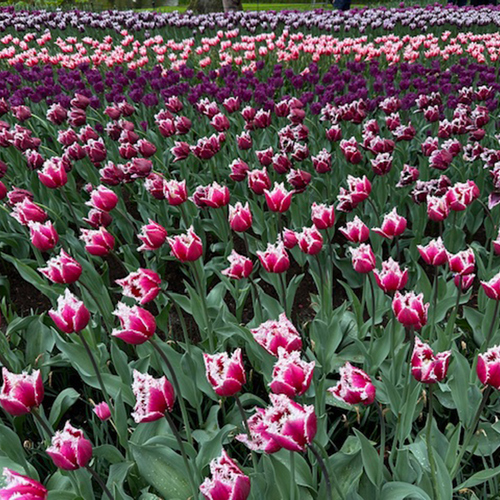Hi GPODers!
Welcome back for Day 2 at Keukenhof Park in Lisse, Netherlands with Kielian DeWitt! If you missed yesterday’s batch of photos, check them out here: Part 1. These expansive gardens have endless blooms and color to admire every year, and Kielian was generous in sharing a wide selection of photos from various areas in the park.
Over 7 million flowering tulips, daffodils and other bulb flowers can be seen every spring at Keukenhof Garden Park, the largest flower garden in the world. Located in the Netherlands, the park is only open for 8 weeks a year from March to May when tourists can visit 79 acres of lush spring plantings. The tulips grow in lovely swaths of color in a creative landscape design which changes every year. At the end of every spring season, all of the bulbs are dug up and every fall, new bulbs are planted.
As a showcase of the best spring bulbs Europe has to offer, the diversity of blooms is paramount to this floral celebration. These expansive borders and beds are not just pretty creations, but living catalogs of the many different bulbs available from the leading bulb producers.
 According to Keukenhof’s website, 100 companies and bulb growers participate in this annual spring showcase. Despite the overwhelming number of varieties, each is paired and planted with care and consideration. The designers at Keukenhof consult with each company to craft designs that compliment colors, heights, and flowering times.
According to Keukenhof’s website, 100 companies and bulb growers participate in this annual spring showcase. Despite the overwhelming number of varieties, each is paired and planted with care and consideration. The designers at Keukenhof consult with each company to craft designs that compliment colors, heights, and flowering times.
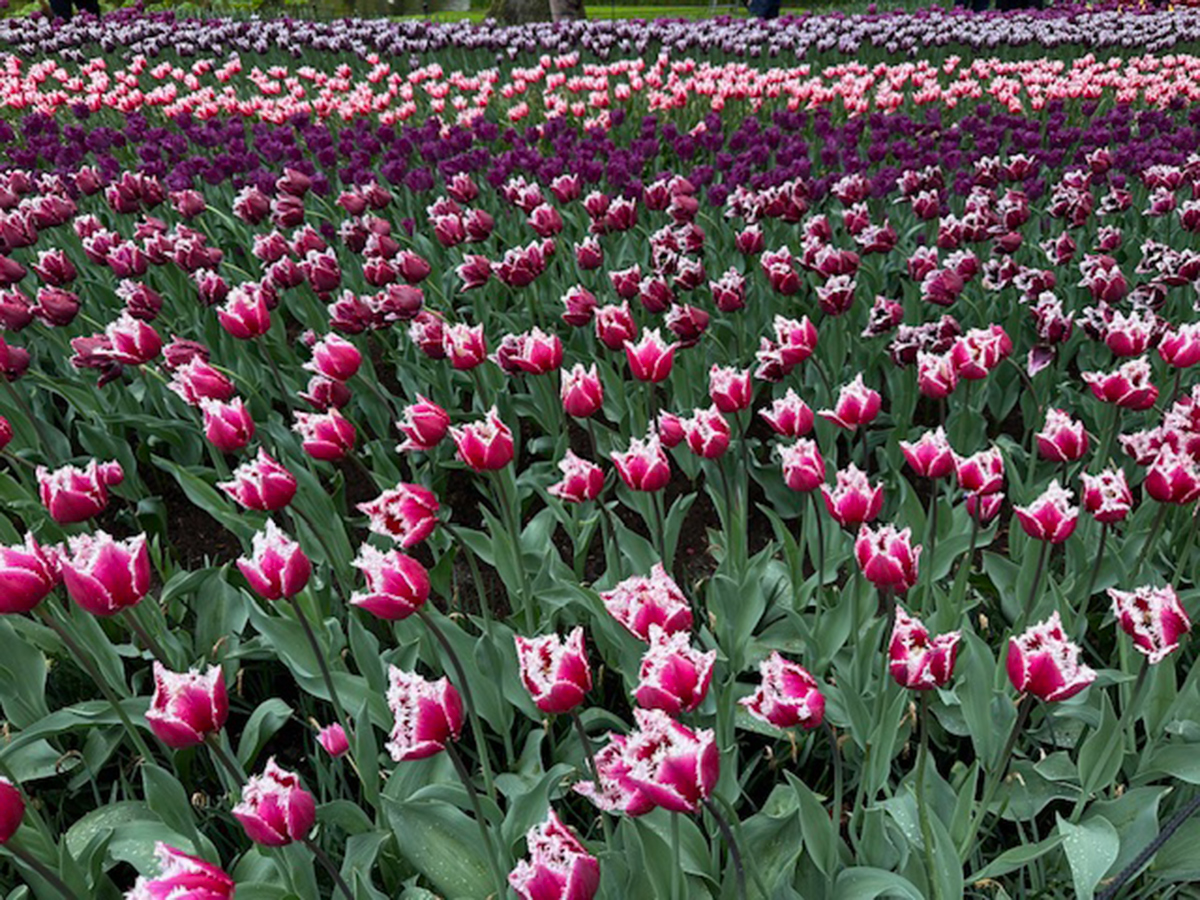 This allows for a striking peak bloom period, and also creates cohesion throughout the 79 acres of bold blooms. This is also where the technique of massing becomes essential. Large drifts of color are much easier on the eyes that the chaos that can be created by mixing and matching all of these different varieties.
This allows for a striking peak bloom period, and also creates cohesion throughout the 79 acres of bold blooms. This is also where the technique of massing becomes essential. Large drifts of color are much easier on the eyes that the chaos that can be created by mixing and matching all of these different varieties.
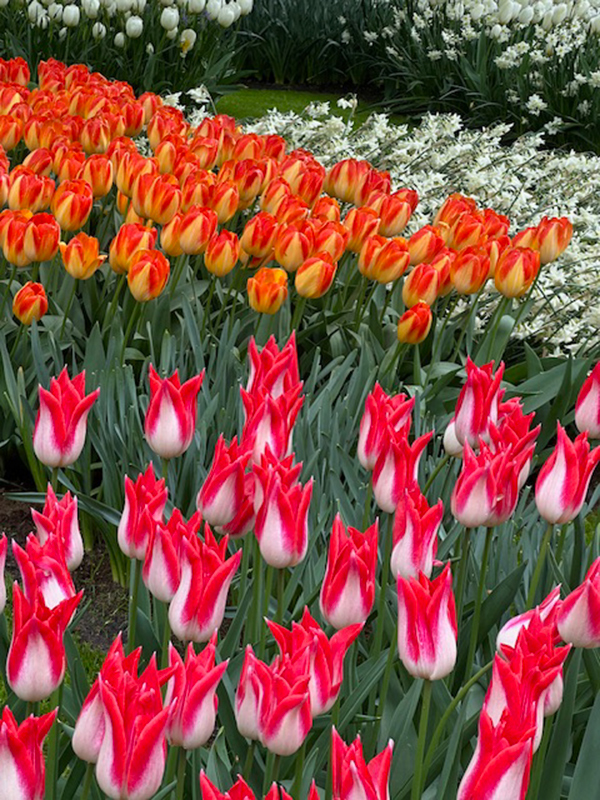 Smart decisions about color pairing are also vital for creating designs that aren’t too overwhelming. These two tulip varieties are so bright and vibrant that they’re nearly neon. Backing bolder cultivars up with drifts of white gives that eye areas to rest around glowing focal points.
Smart decisions about color pairing are also vital for creating designs that aren’t too overwhelming. These two tulip varieties are so bright and vibrant that they’re nearly neon. Backing bolder cultivars up with drifts of white gives that eye areas to rest around glowing focal points.
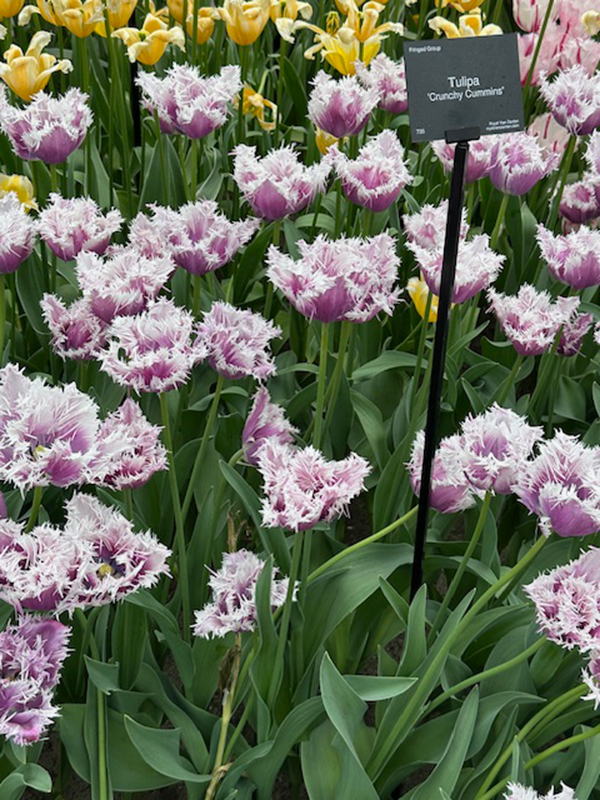 Of course, mixing textures provides another element of interest when designing with lots of the same type of plants. ‘Crunchy Cummins’ tulips (Tulipa ‘Crunchy Cummins’, Zones 3–8) have fluffy, fringed petals that provide a great contrast to the simpler forms of the classic tulip bloom.
Of course, mixing textures provides another element of interest when designing with lots of the same type of plants. ‘Crunchy Cummins’ tulips (Tulipa ‘Crunchy Cummins’, Zones 3–8) have fluffy, fringed petals that provide a great contrast to the simpler forms of the classic tulip bloom.
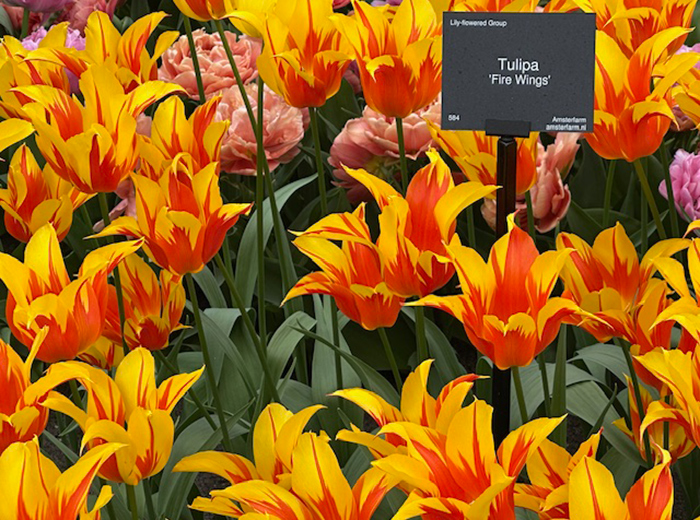 By showcasing and highlighting the best of spring bulb varieties available, there is no limit to the aesthetics and style on display. From soft and frilly, to hot and sharp. ‘Fire Wings’ is an apt name for a bloom that looks like flames leaping out from the ground.
By showcasing and highlighting the best of spring bulb varieties available, there is no limit to the aesthetics and style on display. From soft and frilly, to hot and sharp. ‘Fire Wings’ is an apt name for a bloom that looks like flames leaping out from the ground.
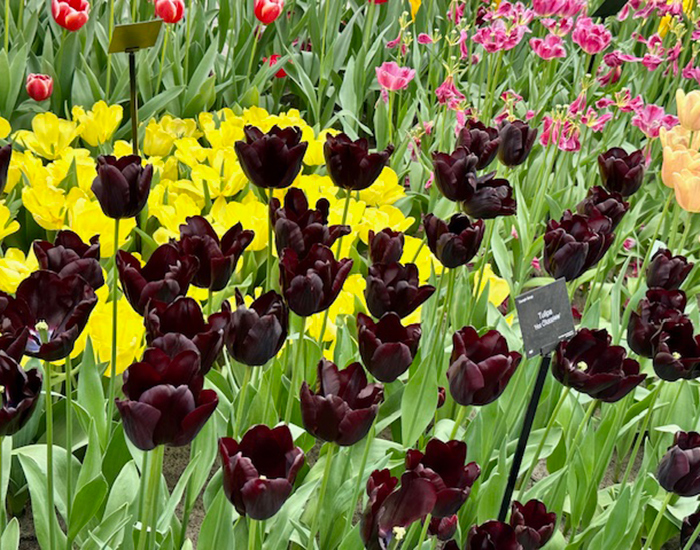 Tulips are also one of few plants that can be bold and bright as well as dark and moody. While no cultivar is truly “black”, there are many in shades of deep purple, maroon, and burgundy that give that gothic aesthetic.
Tulips are also one of few plants that can be bold and bright as well as dark and moody. While no cultivar is truly “black”, there are many in shades of deep purple, maroon, and burgundy that give that gothic aesthetic.
 Lastly, some plant combinations are made simple by pairing cultivars from one collection. ‘Tres Chic Festival’ is this fabulous collection of lily-flowering varieties. Bright white ‘Tres Chic’, sunshine-yellow ‘Florijn Chic, and berry-red ‘Isaak Chic’ come together to create a bold but chic color palette.
Lastly, some plant combinations are made simple by pairing cultivars from one collection. ‘Tres Chic Festival’ is this fabulous collection of lily-flowering varieties. Bright white ‘Tres Chic’, sunshine-yellow ‘Florijn Chic, and berry-red ‘Isaak Chic’ come together to create a bold but chic color palette.
Thank you so much for sharing these colorful photos of this iconic annual spring display, Kielian! The fantastic sights and scenes in this garden endlessly delight, and your stunning photos are the next best thing to hopping on a plane and seeing Keukenhof in person.
While we all couldn’t make a trip to the Netherlands this year (anyone up for a GPOD field trip next year?? 🙋♀️), you don’t need to be in Europe to see some amazing spring gardens. If you’ve enjoyed colorful blooms in a local park, botanical garden, or in your own backyard, celebrate the season and share them with Garden Photo of the Day! Follow the directions below to submit photos via email, or send me a DM on Instagram: @agirlherdogandtheroad.
We want to see YOUR garden!
Have photos to share? We’d love to see your garden, a particular collection of plants you love, or a wonderful garden you had the chance to visit!
To submit, send 5–10 photos to [email protected] along with some information about the plants in the pictures and where you took the photos. We’d love to hear where you are located, how long you’ve been gardening, successes you are proud of, failures you learned from, hopes for the future, favorite plants, or funny stories from your garden.
Have a mobile phone? Tag your photos on Facebook, Instagram or Twitter with #FineGardening!
Do you receive the GPOD by email yet? Sign up here
Fine Gardening Recommended Products
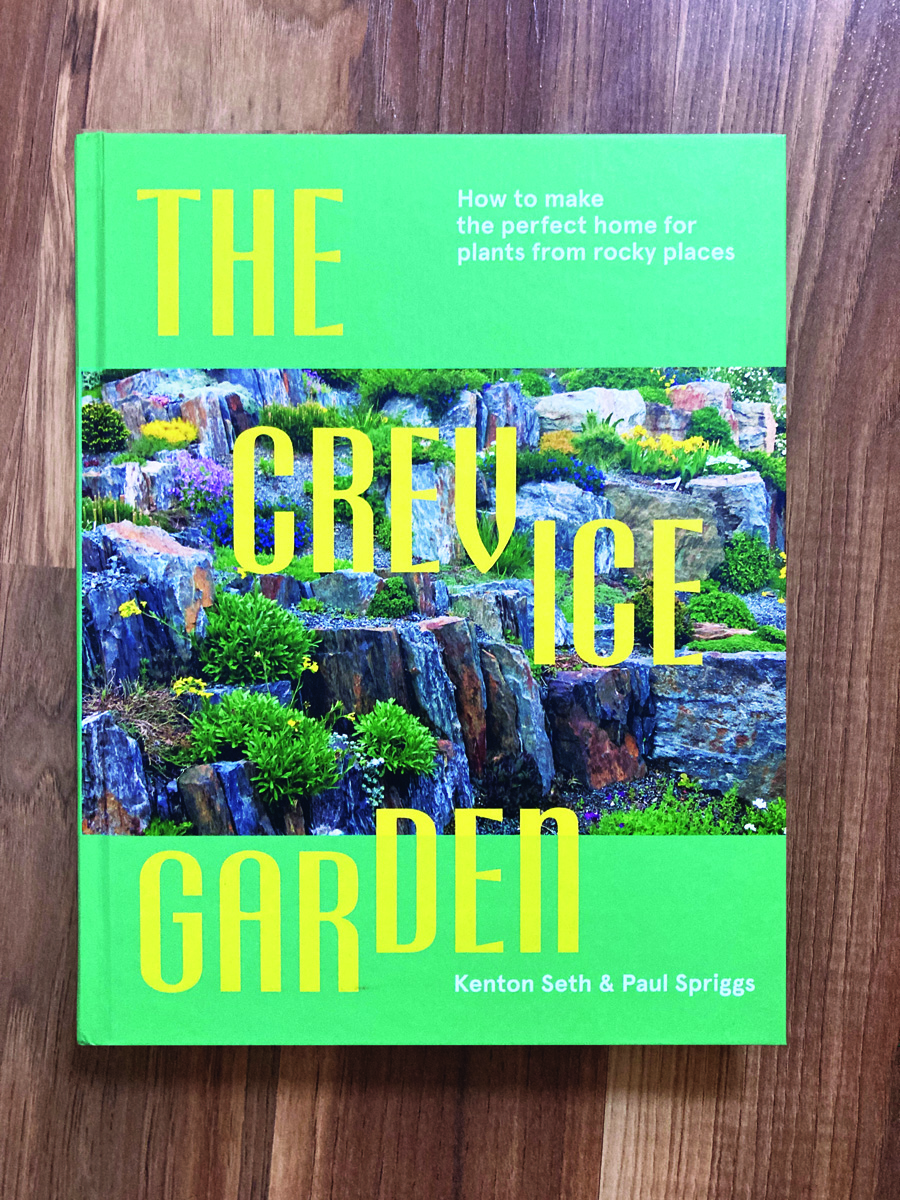
The Crevice Garden: How to make the perfect home for plants from rocky places
Fine Gardening receives a commission for items purchased through links on this site, including Amazon Associates and other affiliate advertising programs.
A crevice garden replicates the environmental conditions of mountain tops, deserts, coastlines, and other exposed or rocky places on earth. These striking garden features provide perfect conditions for the plants native to these far-off places, bringing the cultivation of these precious gems within everybody’s reach.
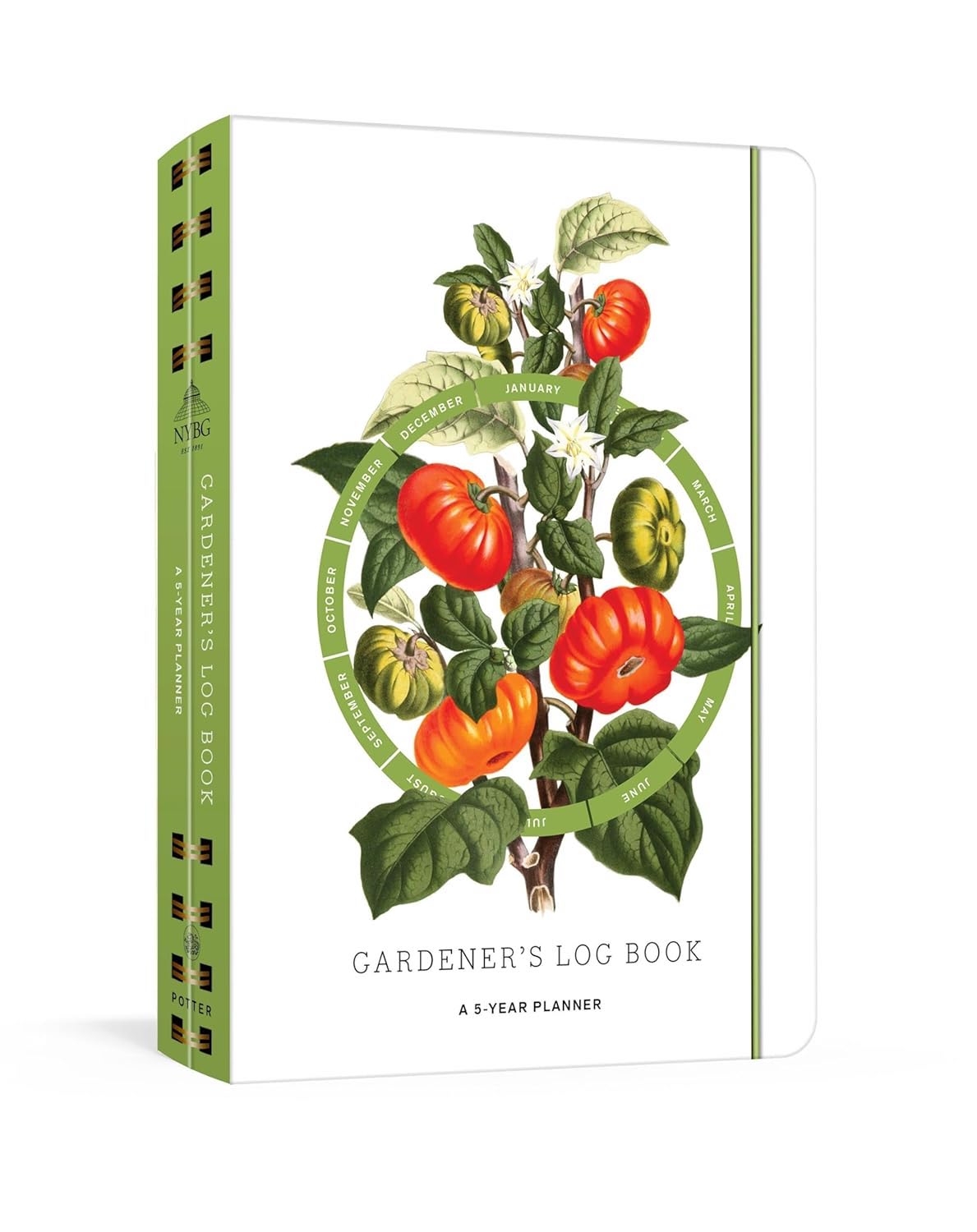
Gardener’s Log Book from NYBG
Fine Gardening receives a commission for items purchased through links on this site, including Amazon Associates and other affiliate advertising programs.
This weatherproof five-year log book includes the following features:
· Sturdy waterproof cover to protect pages from rain and muddy soil
· Lined pages and gridded paper for plotting beds
· Five years of 12-month bloom and harvest grids for recording what you planted and when
· Authoritative appendices on composting, pruning, pest and disease control, and container gardening
· Useful reminders by season on fertilizing, mulching, and transplanting
· Space for listing your favorite sources and suppliers.
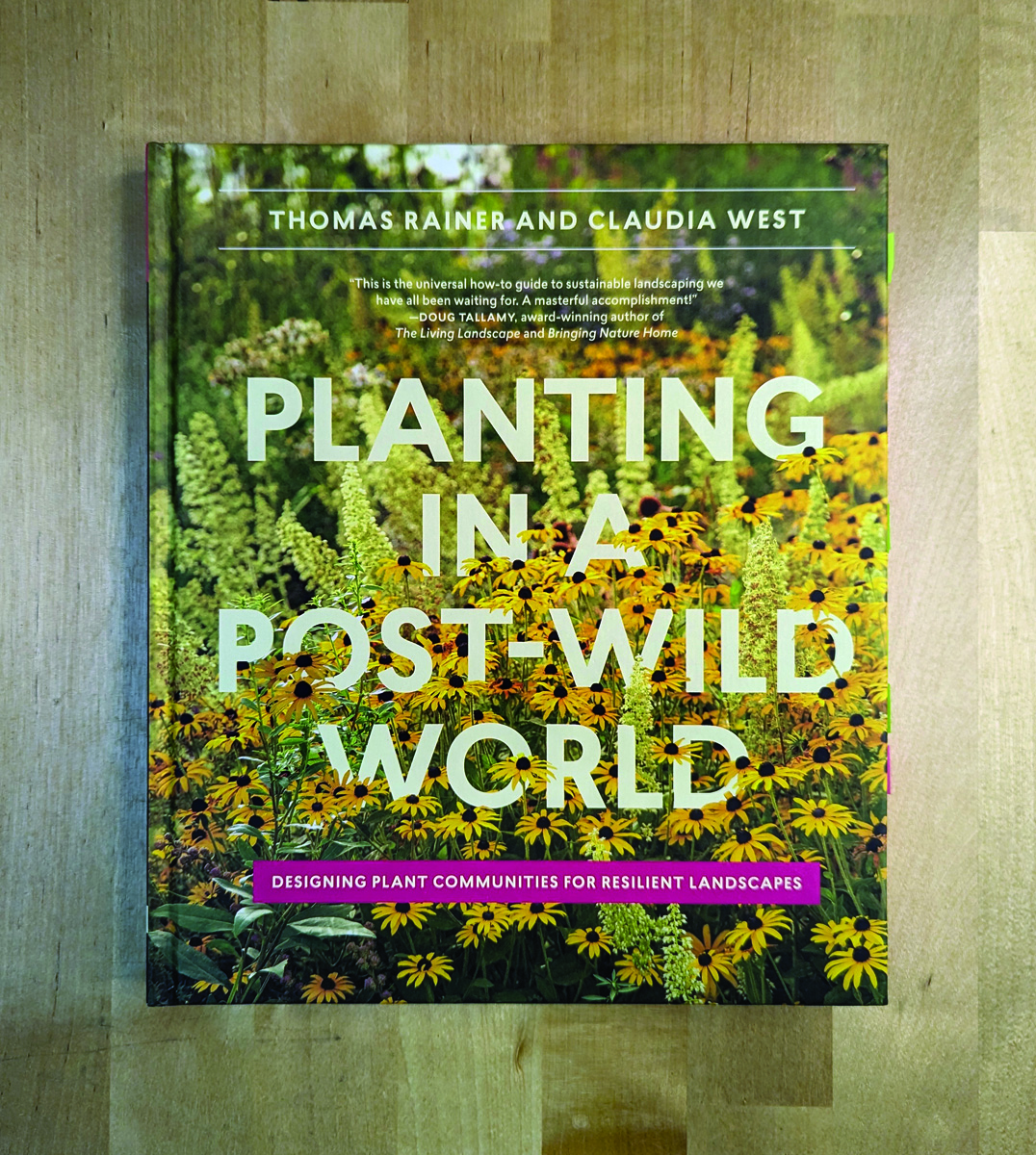
Planting in a Post-Wild World: Designing Plant Communities for Resilient Landscapes
Fine Gardening receives a commission for items purchased through links on this site, including Amazon Associates and other affiliate advertising programs.
Featuring gorgeous photography and advice for landscapers, Planting in a Post-Wild World by Thomas Rainer and Claudia West is dedicated to the idea of a new nature—a hybrid of both the wild and the cultivated—that can nourish in our cities and suburbs.

